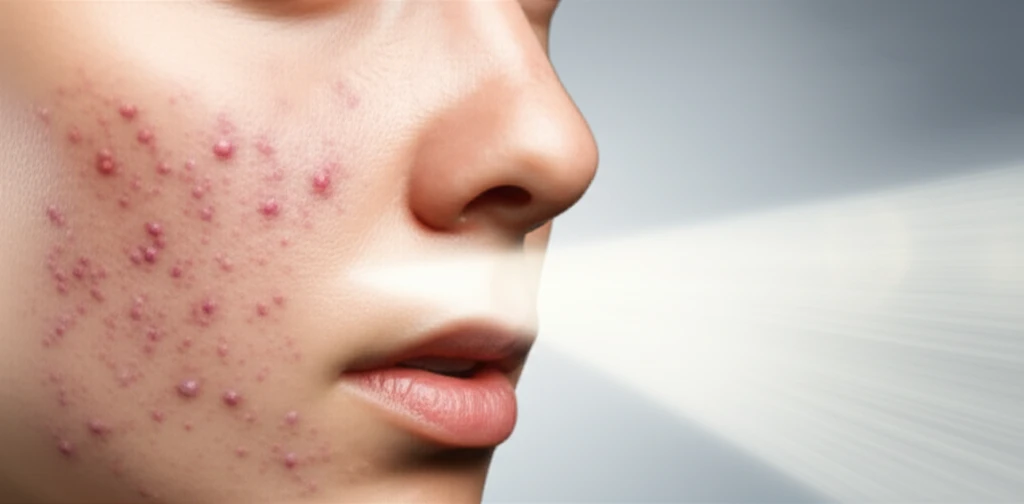
Erlotinib Acne Rescue: How Chromophore Gel-Assisted Phototherapy Can Help
"Discover how chromophore gel-assisted phototherapy offers new hope for treating stubborn acne caused by erlotinib, improving quality of life and allowing cancer treatment to continue."
Erlotinib is a medication used to treat cancers like lung cancer. While it's effective in targeting cancer cells, it often comes with a significant side effect: a severe acne-like skin eruption. This acne can be incredibly distressing, impacting a patient's quality of life and sometimes even forcing them to discontinue their cancer treatment.
Traditional acne treatments often fall short when dealing with erlotinib-induced acne. That's where chromophore gel-assisted phototherapy (CGAP) comes in. This innovative approach is showing promise in clearing up these stubborn eruptions and allowing patients to continue their cancer therapy without added discomfort.
This article explores how CGAP works, its benefits, and what patients can expect from this treatment option, offering a beacon of hope for those struggling with this challenging side effect.
CGAP: A New Approach to Erlotinib Acne

CGAP is a unique treatment that combines a special gel with light therapy. The gel contains chromophores, which are molecules that become activated when exposed to specific wavelengths of light. When the gel is applied to the skin and then exposed to light from a special lamp, the activated chromophores trigger a reaction that reduces inflammation and targets the sebaceous glands, the root cause of acne.
- Reduced Inflammation: The light-activated gel helps to calm the inflammation associated with acne.
- Targets Sebaceous Glands: CGAP reduces the activity of oil glands, helping to prevent future breakouts.
- Non-Invasive: CGAP is a gentle, in-office procedure with no systemic side effects.
- Improved Quality of Life: By clearing the skin, CGAP helps patients feel more confident and comfortable.
Hope for Clearer Skin
Chromophore gel-assisted phototherapy offers a promising new solution for patients struggling with erlotinib-induced acne. Unlike traditional treatments, CGAP directly addresses the underlying causes of acne while minimizing side effects.
If you're experiencing acne as a result of erlotinib treatment, talk to your dermatologist about whether CGAP is right for you. This innovative therapy can help you regain control over your skin and improve your overall well-being, allowing you to focus on your cancer treatment and recovery.
While the results of this case study are encouraging, more research is needed to fully understand the long-term benefits of CGAP. Nonetheless, it represents a significant step forward in managing the challenging side effects of cancer treatment and improving the lives of patients.
